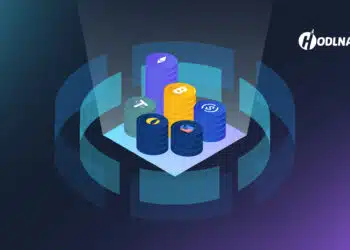Ductile iron casting is a remarkable innovation in the world of metallurgy, offering distinct advantages over other casting methods due to its unique properties and versatile applications. From its impressive strength to its exceptional flexibility, ductile iron has become a preferred material across various industries. This article delves into what makes ductile iron special, how it is formed, its comparison with gray iron, common uses, and the benefits it offers over other materials.
What Makes Ductile Iron So Special?
Ductile iron, also known as nodular iron or spheroidal graphite iron, is a type of cast iron that stands out due to its high strength, impact resistance, and elongation properties. Unlike traditional cast iron, which is brittle and prone to cracking under stress, ductile iron is engineered to be more resilient. This flexibility is achieved by adding small amounts of magnesium or cerium to the iron, which alters the shape of the graphite inclusions within the metal.
In standard cast iron, graphite appears as flakes, which creates points of weakness within the material. In ductile iron, however, these graphite flakes are transformed into spherical nodules. This nodular structure enhances the iron’s mechanical properties, making it much more ductile and less prone to fracturing under stress. This unique microstructure gives ductile iron a combination of strength and flexibility that is ideal for demanding applications.
With a basic understanding of what makes ductile iron distinct, let’s take a look at how this material is formed during the casting process.
From Molten Metal to Marvelous Castings
The casting process for ductile iron is a carefully controlled procedure that starts with the preparation of molten iron. The first step involves melting high-quality raw materials, such as pig iron, steel scrap, and various alloys, in a furnace. Once the iron reaches the desired temperature, it is treated with a small amount of magnesium or cerium. These elements play a crucial role in modifying the shape of the graphite inclusions, turning them from flakes into nodules.
After the treatment, the molten ductile iron is poured into molds, which can be made of sand, metal, or other materials depending on the desired shape and surface finish of the final product. As the iron cools and solidifies, the nodular graphite structure is locked in, giving the material its characteristic strength and ductility. This process not only produces castings with excellent mechanical properties but also allows for the production of complex shapes and thin-walled sections that would be difficult to achieve with other metals.
Now that we have a clearer picture of the casting process, let’s compare ductile iron with its more traditional counterpart, gray iron, to highlight the key differences in their properties and applications.
Ductile vs. Gray Iron: A Showdown of Strength and Versatility
When comparing ductile iron to gray iron, the differences are immediately apparent in terms of mechanical properties and performance. Gray iron, the more traditional form of cast iron, contains graphite flakes, which act as stress concentrators and make the material brittle and prone to cracking. This brittleness limits its use in applications where high tensile strength and impact resistance are required.
In contrast, ductile iron’s nodular graphite structure gives it a much higher tensile strength and better impact resistance. For instance, the tensile strength of ductile iron can range from 60,000 psi to over 120,000 psi, depending on the grade, whereas gray iron typically falls between 20,000 and 60,000 psi. Moreover, ductile iron exhibits superior elongation, meaning it can stretch more under tensile load before failing. This flexibility makes it an excellent choice for components subjected to dynamic loading or shock, such as crankshafts, gears, and suspension components.
In summary, while gray iron is suitable for applications requiring good machinability and vibration damping, ductile iron’s enhanced strength and ductility make it the material of choice for parts that must withstand heavy loads and impacts.
With these differences in mind, it’s clear that ductile iron holds distinct advantages in various industrial applications. Let’s explore some of the common uses where ductile iron shines.
Where Ductile Iron Saves the Day
Ductile iron’s unique properties make it a versatile material that finds use in a wide range of industries. Some of the most common applications include:
- Automotive Industry: Ductile iron is used extensively in the automotive sector for manufacturing engine components, crankshafts, and suspension parts due to its high strength and fatigue resistance.
- Piping and Plumbing: Its excellent corrosion resistance and durability make ductile iron ideal for water and sewage pipes. It can withstand high pressures and resist wear, making it a cost-effective option for infrastructure projects.
- Heavy Machinery: Components such as gears, rollers, and other parts subjected to high stress and wear are often made from ductile iron to leverage its strength and durability.
- Construction and Agriculture: Ductile iron is used in construction equipment and agricultural machinery for its ability to handle heavy loads and harsh operating conditions.
Clearly, ductile iron has carved out a niche in various fields, thanks to its robustness and reliability. But what specific advantages does it offer compared to other materials? Let’s delve into the benefits that make ductile iron a standout choice.
Why Choose Ductile Iron? The Superpowers of a Superior Material
Ductile iron offers several advantages over other materials, making it an attractive option for manufacturers and engineers. Some of its key benefits include:
- High Strength and Durability: Ductile iron provides a higher strength-to-weight ratio compared to traditional cast iron, making it suitable for components that must bear significant loads without adding excessive weight.
- Improved Ductility: The material’s ability to deform under tensile stress without breaking allows for more complex shapes and designs, which can be crucial in applications like automotive parts or machinery components.
- Cost-Effectiveness: Despite its superior mechanical properties, ductile iron is relatively inexpensive compared to other high-performance materials like steel. This makes it an economical choice for large-scale manufacturing and infrastructure projects.
- Corrosion Resistance: Ductile iron has better resistance to corrosion compared to other types of cast iron, especially when alloyed with elements like nickel or copper. This enhances its suitability for use in harsh environments or for water and sewage systems.
- Versatility: The casting process allows for the production of complex shapes and sizes, from small precision parts to large structural components, which broadens its applicability across different industries.
With all these benefits in mind, it’s easy to see why ductile iron has become such a popular material for a variety of applications. But what does this mean for its overall impact on industries?
Final Insights: Why Ductile Iron Reigns Supreme
Ductile iron casting stands out as a powerful and versatile method for producing high-strength components that can withstand demanding conditions. Its unique properties, stemming from its nodular graphite structure, give it a clear edge over traditional gray iron in terms of strength, flexibility, and resilience. Whether it’s in the automotive industry, infrastructure, or heavy machinery, ductile iron proves its worth through durability and performance. This makes it an indispensable material for engineers and designers looking to optimize the balance between cost and functionality in their projects.










